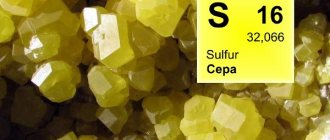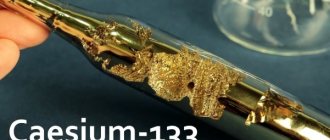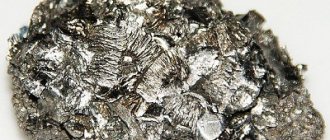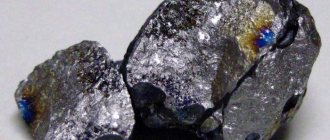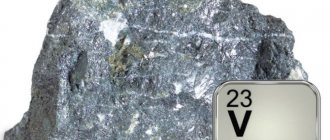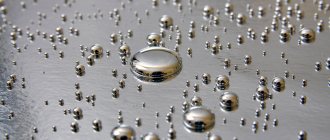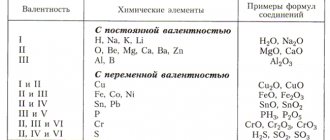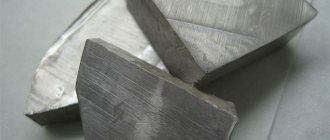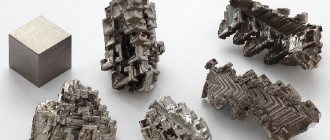What is a mole
Before we talk about how to find the molar mass of a substance, let's define the concept of “mole”.
It was introduced as an artificial quantity to simplify calculations. This is the amount of substance that contains the same number of tiny particles as 12 g of one of the carbon isotopes - C12. For all chemicals this amount is the same and is Avogadro's number 6.02 1023. Avogadro's constant is denoted NA and is measured in mol-1.
Avogadro's number is the number of molecules, ions or other small particles in 1 mole of a substance.
NA = 6.02 1023 mol-1.
Historical reference
In 1811, chemist Amedeo Avogadro suggested that if you take two equal volumes of gases under equal significant conditions (at the same temperature and pressure), then the number of molecules in these volumes will also be the same. Based on his hypothesis, he determined the atomic and molecular masses of many substances, and also calculated the number of atoms in molecules of water, nitrogen oxides, etc. However, Avogadro’s hypothesis was not understood for a long time in scientific circles. It became generally accepted only in 1860.
Deposits and production
Among the CIS countries, Russia accounts for more than half of the identified chalk reserves, 138 deposits. The largest of them are located in three constituent entities of the Russian Federation:
- Belgorod region. This is the main raw material base of the country. The thickness of the strata is about 30 meters and extends close to the surface. The purest chalk is mined here.
- Voronezh region. A special feature of the useful horizon is its high saturation with water, which complicates the process of mining and processing the rock. However, this is compensated by the extremely uniform white texture of the chalk and the high content of calcium and magnesium carbonates - up to 99%.
- Volgograd region. Here is the largest number of chalk layers - 12. The largest is in the Mikhailovsky district.
In the near abroad, the most significant deposit is Dobrushskoye, located in the Gomel region of the Republic of Belarus. The average thickness of the deposit is 30 m.
Preliminarily estimated reserves are 400 million tons. The mineral is used mainly in construction for the production of cement and lime.
At most mining enterprises, mineral extraction in a quarry is carried out in the traditional way - using an excavator and a bucket. However, this method raises a number of difficulties:
- the chalk does not dry out in the required amount;
- rock sticks to the working elements of machines when extracting stone from lower watered horizons;
- the required fraction is missing.
Currently, in a number of countries in Western Europe and America, a fundamentally new method of extracting and pre-processing chalk is used to solve these problems - using a rotary cutter. Its use allows you to reduce the cost of operating a hydraulic excavator.
What is molar mass
Molar mass is the mass of one mole of a substance and is measured in grams divided by mole (g/mol). This value is the ratio of the mass of a substance to its quantity, which is measured in moles.
How is molar mass indicated: M.
, where is the mass of the substance, and is the amount of the substance.
Unit of molar mass: g/mol.
Let's remember!
It is correct to say molar mass, not molar mass.
Despite the fact that 1 mole of any chemical substance contains the same number of molecules (and it is equal to Avogadro's number), the molar masses of different substances differ. This is because the atoms that make up these molecules are different. In particular, the difference between them is the relative atomic mass (Ar) - for example, Ar(Mg) = 24, and Ar(Hg) = 200. Now it will become clear why this matters.
Physical properties and applications
The mineral chalk is a fine-grained carbonate sedimentary rock of organic origin. In its structure, the largest share is made up of calcium and magnesium carbonates, as well as metal oxides. Based on its genesis and chemical composition, it has the following characteristics:
- has a white color, sometimes colored by impurities in various shades;
- fragile - easily drawn with a simple pencil;
- lightweight - density varies from 1440 kg/m3 in lump form to 1120 kg/m3 in powder;
- insoluble in water and resistant to weathering (forms the massive cliffs of Étretat on the English Channel);
- plastic when wet.
Possessing a unique combination of brightness and whiteness, low hardness and the absence of harmful impurities, this attractive natural material serves as raw material for various industries. The scope of application of chalk includes the production of:
- filler for emulsions and paints;
- basics for the production of building mixtures and materials;
- bleach in the paper industry;
- accelerator of rubber vulcanization processes;
- component of the charge when melting glass;
- flour for feeding animals and preparing animal feed;
- raw materials for the production of fertilizers and soil liming;
- component of tooth powders and pastes;
- the basic basis for the manufacture of cosmetics - powder, lipstick, creams;
- food additive E170 against caking in food products.
How to determine molar mass
This quantity is closely related to concepts such as relative atomic and molecular masses. Precisely relative, because the absolute mass of a molecule or atom of a substance in chemistry is not used to solve problems - these are too small values.
The relative atomic mass of a substance (Ar) shows how many times its atom is larger than 1/12 of a carbon atom. This value for each chemical element can be seen in the periodic table.
The relative molecular mass (Mr) is the sum of the Ar of each atom in the molecule of a substance, taking into account the indices. It shows how much the mass of a molecule is greater than 1/12 of a carbon atom.
, where is the number of atoms.
Let's look at examples.
In a molecule of sodium chloride NaCl there is 1 sodium atom and 1 chlorine atom, with Ar(Na) = 23, Ar (Cl) = 35.5.
Mr(NaCl) = 23 + 35.5 = 58.5.
A NaNO2 molecule contains 1 sodium atom, 1 nitrogen atom and 2 oxygen atoms.
Ar(Na) = 23, Ar(N) = 14, Ar(O) = 16.
Mr(NaNO2) = 23 + 14 + 16 2 = 69.
Actually, nothing else is required to calculate the molar mass.
Important
The molar mass of a substance is numerically equal to the relative molecular mass. But these two concepts should not be confused - they have different physical meanings. Molar mass characterizes 1 mole, and relative molecular mass characterizes 1 molecule.
Origin and composition of white stone
In 1838, the German paleontologist H. Ehrenberg, while describing the geological section of the ocean floor, determined that most of the Cretaceous deposits consisted of shells of the simplest marine microorganisms - foraminifera, the diameter of which ranged from 0.095−0.0047 mm. They can be found in all latitudes and at almost all depths, even at the bottom of the Mariana Trench. But their greatest number and diversity is observed at a depth of 200−300 m.
There are 2 types of unicellular organisms. One part absorbs grains of sand from the surrounding water space, which are then released on the surface of the cell and adhere to its outer layer, subsequently becoming the building material of the skeleton. Another large part actively absorbs calcium salts dissolved in water and makes shells out of them. It was this species that played a major role in the formation of limestone.
Along with foraminifera, the simplest planktonic algae - coccolithophores - took part in the creation of ancient Cretaceous deposits, on the surface of which calcareous plates - coccoliths are formed. After dying, they settle to the bottom of the water basin, where sedimentary rocks are formed. In addition to the remains of ancient plants and mollusk shells, chalk contains various inorganic impurities:
- finely worn crystalline calcite binding shell fragments;
- flint nodules - fine-grained silica nodules consisting of microscopic grains of quartz;
- a mixture of clay and glauconite, which gives the stone a green tint.
Over 80 million years, as a result of geological processes, huge accumulations of bottom silts, dead invertebrate animals and plants formed a monolithic rock - limestone and its types. The movements of lithospheric plates caused sections of the seabed to rise and mountains of chalk sediments, reaching several meters, appeared on the land surface.
Quantity of substance
From the previous formulas it is clear that the molar mass and the amount of a substance are closely related. Let's look at this connection in more detail. Let's start with the fact that the amount of a substance can be denoted by either a Latin letter or a Greek letter (nu). The international designation is , but do not be surprised when you encounter any of these letters in formulas.
In the formula for finding the molar mass, we denoted the amount of substance through:
, hence .
Using this, we can find the amount of a substance (in moles) if we know its absolute and molar mass.
Example 1
How to determine what amount of substance is included in 350 g of barium sulfate BaSO4?
Let's use the formula.
We remember that M = Mr (the value of the molar mass is equal to the value of the relative molecular mass).
Mr(BaSO4) = Ar(Ba) + Ar(S) + Ar(O) 4 = 137 + 32 + 16 4 = 233.
M(BaSO4) = Mr(BaSO4) = 233 g/mol.
Let's substitute the molar mass value into the formula:
mole.
There is another formula for the amount of a substance that allows you to find it if the number of molecules or other structural units is known.
, where is the number of structural units, is Avogadro’s number.
Example 2
Let's say a certain volume of CaCO3 contains 3.01 · 1023 molecules. How to find the amount of a substance corresponding to a given volume?
Let's use the formula mole.
Molar volume
Above we found the amount of a substance through molar mass, but for gases this can also be done through molar volume. According to Avogadro's law, an amount of any gas equal to 1 mole will occupy the same volume if the gases are considered at the same temperature and pressure.
Under standard physical conditions - temperature 0°C and pressure 1 atm or 760 mmHg, 1 mole of gas occupies a volume of 22.4 liters.
Molar volume is the volume of gas taken in the amount of 1 mole. It is designated Vm.
Under normal conditions, Vm = 22.4 l/mol.
The values of the molar and actual volume of a gas help to find the amount of a substance.
, where is the actual volume of gas, and is the molar volume.
Example 1
How many moles are contained in 120 liters of gas under normal conditions?
Let's calculate using the formula mole.
Answer: 120 liters of any gas under standard conditions contain 5.36 moles.
Relative density of one gas to another
Sometimes, to solve a problem, you need to know how to find the molar mass of a gas, for which only its density in air or another gas is reported. This is possible if you know the relative density formula, which is denoted by the letter D.
, where and are some gases.
Example 1
How to determine how many times carbon monoxide is denser than hydrogen?
First, let's find the molar mass of CO and H2:
M(CO) = Mr(CO) = Ar(C) + Ar(O) = 12 + 16 = 28.
M(H) = Mr(H2) = 2 Ar(H) = 2 1 = 2.
.
Answer: Carbon monoxide is 14 times denser than hydrogen.
Example 2
How to calculate the molar mass of a gas x, which is known to be 10 times denser than carbon dioxide CO2?
First, let's calculate the molar mass of carbon dioxide:
M(CO2) = Mr(CO2) = 12 + 2 16 = 44.
Based on the relative density formula, we will calculate the molar mass of the desired gas x.
M(x) = D(x/CO2) M(CO2) = 10 44 = 440 g/mol.
Answer: This gas has a molar mass of 440 g/mol.
How is chalk useful for humans?
Chalk contains calcium, which is very useful for our body, because it is the basis of bone structure. In addition, chalk normalizes the iron content in the blood and has a very good effect on tooth enamel, preventing the occurrence of caries.
Interesting materials:
How many steps are there in the All-Russian Physical Culture and Sports Complex GTO? How many steps are there on high Hrothgar? How long did the Young Guard exist? How many Tajiks? How many tanks are in one tank division? How many calves does a cow give birth to? How many tons of fuel are in the tank? How many tons are in a railway tank? How many colors should a child know? How many tourists visited Italy in 2022?
